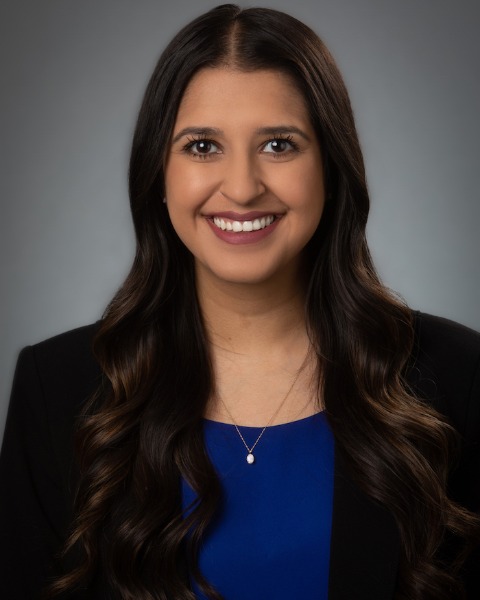General Pediatrics 4
Session: General Pediatrics 4
231 - Caregiver Insights on Accidental Cannabis Ingestions in Children
Sunday, April 27, 2025
8:30am - 10:45am HST
Publication Number: 231.4329
Saleena Ramzanali, University of Oklahoma College of Medicine, Oklahoma City, OK, United States; Cecilia C.. Guthrie, Oklahoma Childrens Hospital at OU Health, Oklahoma City, OK, United States; Nikita Natha, Children's Health, Plano, TX, United States

Saleena Ramzanali, MD (she/her/hers)
Resident Physician
University of Oklahoma College of Medicine
Oklahoma City, Oklahoma, United States
Presenting Author(s)
Background: Since Oklahoma legalized medical marijuana in 2018, there has been a significant increase in pediatric accidental marijuana ingestions. Toxic marijuana ingestions can cause many symptoms in children including altered mental status, seizures, and behavioral concerns. Limited studies have evaluated the perception of these risks in the pediatric population.
Objective: The objective of this study is to evaluate the knowledge gaps of caregivers on accidental pediatric cannabis ingestions and storage methods of marijuana if used in the home.
Design/Methods: A cross-sectional anonymous survey was completed by caretakers who presented to Oklahoma Children’s Hospital Emergency Department (OCHED) and two pediatric clinics in the OU Health System for any visit type. A pilot study was performed in the OCHED between December 2023 and January 2024. Pediatric clinics were added to improve response rate and the survey was slightly modified. The survey was completed from July 2024 to September 2024, included 178 responses, and was available in English and Spanish. It consisted of 12 questions that assessed caretaker demographic information and perception of cannabis and accidental cannabis ingestions. A convenience sampling was used for survey distribution.
Results: Most respondents (90.5%) reported that marijuana causes different side effects in children compared to adults. Respondents reported “I don’t know” (31.4 %) when asked about pediatric symptoms. The highest level of care in response to a pediatric accidental ingestion reported was no medical attention with home observation(12.9%), emergency department visit(63.7%), contacting poison control(25.1%), hospitalization(21.6%) or critical care(18.1%). Some respondents who had medical marijuana in the home utilized a lockbox(47.1%). Increased public awareness about the potential dangers of accidental marijuana ingestion in children and safe storage practices was a priority in 90.3% of survey participants, while 91.3% of participants reported a lack of receiving any information regarding this subject.
Conclusion(s): Caretakers reported a lack of education regarding cannabis safe storage practices or accidental cannabis ingestions by the child’s primary care provider. In addition, most participants emphasized a need for more public awareness and education about the potential dangers of accidental ingestion in children. Study limitations included a small sample size and sampling bias. Anticipatory guidance with parents and caretakers of children during well-child appointments regarding cannabis safety and accidental ingestion dangers may help address these knowledge gaps.

